Related Research Articles

Carlos Humberto Santana Barragán is an American guitarist, best known as a founding member of the rock band Santana. Born and raised in Mexico where he developed his musical background, he rose to fame in the late 1960s and early 1970s in the United States with Santana, which pioneered a fusion of rock and roll and Latin American jazz. Its sound featured his melodic, blues-based lines set against Latin American and African rhythms played on percussion instruments not generally heard in rock, such as timbales and congas. He experienced a resurgence of popularity and critical acclaim in the late 1990s.
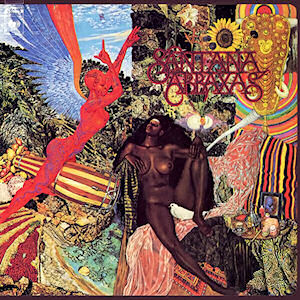
Abraxas is the second studio album by American Latin rock band Santana. It was released on September 23, 1970, by Columbia Records and became the band's first album to top the Billboard 200 in the United States. In 2020, Rolling Stone magazine ranked the album number 334 in its list of the "500 Greatest Albums of All Time".

Gregg Alan Rolie is an American keyboardist, singer and songwriter. Rolie served as lead singer of the bands Santana and Journey – both of which he co-founded. He also helmed rock group the Storm, performed in Ringo Starr & His All-Starr Band until 2021, and since 2001 with his Gregg Rolie Band. Rolie is a two-time inductee of the Rock and Roll Hall of Fame, having been inducted both as a member of Santana in 1998 and as a member of Journey in 2017.

Santana is the third studio album by the American rock band Santana. The band's second self-titled album, it is often referred to as III or Santana III to distinguish it from the band's 1969 debut album. The album was also known as Man with an Outstretched Hand, after its album cover image. It was the third and last album by the Woodstock-era lineup, until their reunion on Santana IV in 2016. It was also considered by many to be the band's peak commercially and musically, as subsequent releases aimed towards more experimental jazz fusion and Latin music. The album also marked the addition of 16-year-old guitarist Neal Schon to the group.
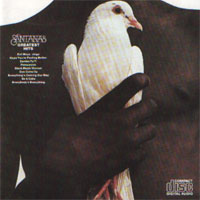
Santana's Greatest Hits is a 1974 compilation album by Santana. It offers highlights from the group's first three albums. It is the band's best-selling compilation album, selling over 7 million copies in the United States.
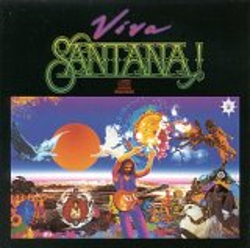
Viva Santana! is a 1988 compilation album by Santana.

Armando Peraza was a Cuban Latin jazz percussionist and a member of the rock band Santana. Peraza played congas, bongos, and timbales.

Santana is an American rock band formed in San Francisco, California in 1966 by Mexican-born guitarist Carlos Santana. The band has undergone various recording and performing line-ups in its history, with Santana being the only consistent member. After signing with Columbia Records, the band's appearance at the Woodstock Festival in 1969 increased their profile, and they went on to record the critically acclaimed and commercially successful albums Santana (1969), Abraxas (1970), and Santana III (1971). These were recorded by the group's "classic" line-up, featuring lead vocalist Gregg Rolie, percussionists José "Chepito" Areas and Michael Carabello, drummer Michael Shrieve and bassist David Brown. Hit songs of this period include "Evil Ways", "Black Magic Woman", "Oye Como Va" (1971), and the instrumental "Samba Pa Ti" (1973).
Joseph Thomas "Coke" Escovedo was an American percussionist, who came from a prominent musical family including five musician brothers and his niece, Sheila E. He played in various genres, including R&B, jazz fusion and soul, with bands including Santana, Malo, Cal Tjader, and Azteca.

The Essential Santana is a compilation album by Santana, released on October 22, 2002. The collection is part of a series of Essential sets released by Columbia Records.

The Best of Santana Vol. 2 is a 2000 Compilation album by Santana and a companion album to 1998's The Best of Santana.

Chuck Berry's Golden Decade is a compilation of music by Chuck Berry, released in three volumes in 1967, 1973, and 1974. Covering the decade from 1955 to 1964, each volume consists of a two-LP set of 24 songs recorded by Berry. The first volume reached number 72 on Billboard's Pop Albums chart. The second volume peaked at number 110. The third volume, which included only two hit singles among its tracks, did not chart.
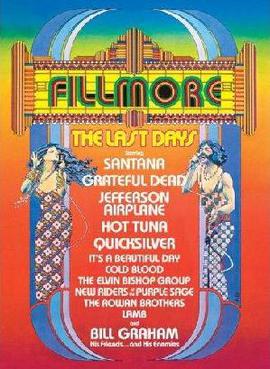
Fillmore — also known as Fillmore: The Last Days, and as Last Days of the Fillmore — is a music documentary film, primarily shot at the Fillmore West auditorium in San Francisco, California, from June 29 through July 4, 1971. It was released on June 14, 1972.

Fillmore: The Last Days is a live album, recorded at the Fillmore West in San Francisco, California from June 29 to July 4, 1971. It contains performances by 14 different bands, mostly from the San Francisco Bay Area, including Santana, the Grateful Dead, Hot Tuna, Quicksilver Messenger Service, and the New Riders of the Purple Sage. It was released by Columbia Records in June 1972 as a three-disc LP. It was re-released by Epic Records in 1991 as a two-disc CD.

The discography of the rock band Santana formed by the Mexican-American rock guitarist Carlos Santana consists of 26 studio albums, 8 live albums, 61 singles, and 23 compilation albums.
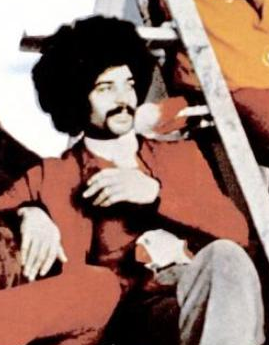
Michael Carabello is an American musician, best known for playing percussion with Santana during the band's early years. He is a member of the Rock and Roll Hall of Fame.
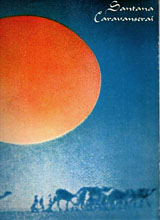
The Caravanserai Tour was a series of performances by American Latin rock band Santana in support of their album Caravanserai during 1972 and 1973. It started on September 4, 1972, at the Erie Canal Soda Pop Festival in Griffin, Indiana, and ended on October 21, 1973 at Ginasio Municipal Novo in Brasília, Brazil. This tour could be considered to be the group's most eclectic tour at this point, as the band did concerts at every continent except Africa and Antarctica, including one of the first, if not the first, tours of Latin America by a major American rock act.

The Welcome Tour was a concert tour by Santana promoting their album, Welcome. The tour began on November 13, 1973 at Colston Hall in Bristol, England and ended on October 29, 1974 at the William P. Cole, Jr. Student Activities Building in College Park, Maryland.
References
- ↑ Henderson, Alex. "Abraxas - Santana | Songs, Reviews, Credits". AllMusic . Retrieved October 3, 2019.
- ↑ Viva Santana! (1988) compilation album's 48-page booklet – track annotations by Carlos Santana.
- ↑ "Santana – Viva Santana!". discogs.com. 2016. Retrieved 11 August 2016.
- ↑ Planer, Lindsay. Fillmore: The Last Days at Allmusic. Retrieved April 11, 2013
- ↑ "Fillmore: The Last Days (LP and Movie, 1972)", Hooterollin' Around, March 23, 2012. Retrieved April 12, 2013.